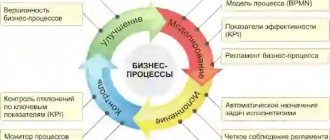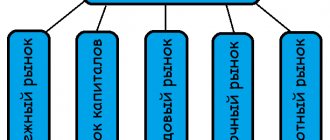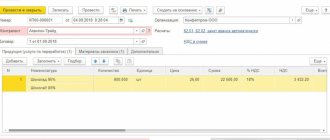The basics of office work and document flow for beginners is a brief instruction that will help you understand what types of documentation a clerk has to work with and what the principles of work are.
Every employee who interacts with documents to one degree or another is required to learn the basics of office work - this is the area of \u200b\u200bknowledge that they need. Although the bulk of the work in this area falls on the secretariat, it is also useful for representatives of other specialties to understand the documentary activities of the organization. Let's clarify the main points.
Regulatory framework
The Federal Archival Agency coordinates the entire system of records management and provides methodological support to its participants: the basics of records management and document flow are under the jurisdiction of this department.
The development of document forms itself is carried out by the Federal Agency for Technical Regulation and Metrology (known as Gosstandart). Another significant organization is VNIIDAD. Her competence includes research work in the field of document management and archival affairs.
As for laws and regulations, specialists need to pay special attention to:
- Federal Law No. 125-FZ of October 22, 2004;
- GOST R 7.0.97-2016;
- GOST 6.10.5-87;
- Order of the Ministry of Culture No. 526 of March 31, 2015;
- Order of the Ministry of Culture No. 558 of August 25, 2010;
- Resolution of the State Statistics Committee of Russia No. 1 of 01/05/2004.
Rosarkhiv also offers methodological recommendations for developing instructions for office work.
Main questions of the topic. 1. Document flow: volume, stages, structure, main growth factors
1. Document flow: volume, stages, structure, main growth factors.
2. Reception of documents and their preliminary consideration.
3. Transfer of the document to the executors.
1. Document flow is the movement of documents in an organization from the moment they are created or received until the completion of execution, placement in file or dispatch.
The volume of document flow is the number of documents received by the organization and created by it over a certain period.
Stages of document flow:
• primary processing of documents received by the organization;
• preliminary review of documents;
• registration, review by management and transfer of documents for execution;
• execution of documents;
• processing of executed and sent documents.
The movement of documents reflects the organizational structure of the management apparatus and the distribution of responsibilities between its components. Therefore, improving document flow is associated with improving the management structure itself and cannot be considered in isolation.
A rational document flow system must comply with the following principles:
• exclude or limit the return movement of documents;
• ensure that the document stays only once in one structural unit or with one executor;
• make the document being held by a specific official conditional on the need to process the document;
• provide for the parallel execution of various operations with a document to reduce the time of its movement and the efficiency of its execution;
• ensure the transfer to the preschool educational institution service of registration and information information about the progress of the movement and execution of documents without the return movement of the documents themselves;
• provide for all possible options for document movement.
Basic controlled document flow parameters:
• content or functionality;
• flow structure;
• flow direction and volume.
According to the Rules of Office Work in Federal Executive Bodies (2009), document flows are distinguished in their document flow:
— incoming documentation (incoming);
— sent documentation (outgoing);
— internal documentation.
The content of the document flow is characterized by the composition of the documents included in it and the composition of the information enshrined in these documents.
The structure of the document flow is described by characteristics in accordance with which documents can be classified and indexed, and a system of scientific reference apparatus for the organization’s documents can be built.
Document flow mode is a state corresponding to cyclical changes associated with the internal rhythm of the organization. The direction of document flow is the specificity of the movement of documents, depending on the content of a specific technological link in document processing.
The main factors for the growth of document flow:
• creation of new organizations, expansion of production and trade relations, increase in production output;
• growth of scientific personnel, population growth and increase in its activity;
• introduction of technical means;
• increasing volumes of use of documentary information.
Accounting and analysis of document flow . The volume of document flow is recorded in order to improve the organization of work with documents and calculate the optimal number of employees involved in office work.
Analysis of the volume of document flow, the structure of document flows and the content of documents received by the organization and created by it is carried out in order to rationally distribute document flows, improve executive discipline, the quality and efficiency of decisions made.
Data on the number of documents is summarized, analyzed by the preschool educational institution service and presented to the head of the organization in the prescribed manner in the form of certificates (summaries, reports) of a statistical and analytical nature.
The number of documents is recorded according to registration data at the places where documents are registered.
A copy of a document (original or copy, if this is the only copy of a document) is taken as a unit for recording the number of documents. Copies of a document obtained as a result of copying or reproducing a document are not taken into account in the volume of document flow.
Accounting for copied and replicated documents can be kept separately according to the registration data of the copying bureau to determine the load on technical equipment, calculating the need for new equipment, rationing the labor of the staff of the copying bureau and determining the number of personnel.
When accounting for outgoing documents, the cover letter and the documents attached to it are accepted as one document.
2. The DOW service accepts for processing only correctly executed documents that have legal force and are sent in full (if there are attachments).
The technology for obtaining a document depends on the type of document delivery. So, when receiving a fax, you must ensure the integrity of the received text. A document received by email requires printing and notification to the sender of receipt of the message.
Depending on the specifics of delivery, receipt of documents is certified (recorded) by a posting book, journal, or document receipt.
During the forwarding processing of documents received by the organization (incoming documents), a registration stamp is affixed to them. Documents subject to storage in the preschool educational institution service are marked with an additional o. The same with the appropriate note is carried out when documents are received again. Forwarding processing of incoming documents should be carried out on the day they are received or on the first working day if correspondence is received on non-working days.
Documents received by the organization during business hours undergo initial processing and are submitted for registration on the day of receipt; if received after business hours, on the next business day. If the absence of documents or attachments to them is detected, an act is drawn up in three copies (one act remains in the DOW service, the second is attached to the received document, the third is sent to the sender of the document). It is necessary to save the envelope in which the document was received in cases where only the envelope can be used to determine the sender's address and the date of receipt.
Documents received from o, “Operatively”, etc., are submitted for registration immediately.
Preliminary review of documents in the preschool educational institution service is the second stage of passing incoming documents, during which the prompt receipt of documents by the executors is ensured and the formation of a full-fledged scientific and reference apparatus. The basis for making a decision during the preliminary review is the content of the document, and not the address of the document to the relevant official.
Employees of the preschool education service establish the competence and responsibility necessary to resolve the issues raised in the document; then those of them are selected for the consideration and determination of the order of which it is necessary to involve the head of the organization. Documents containing current operational information or addressed to specific structural units are transferred to their destination without consideration by the manager.
Documents addressed to him personally, as well as documents containing information on the most important issues of the organization’s activities, are submitted for consideration by the head of the organization.
The documents reviewed by the head are subject to return to the preschool educational institution service, where the resolution of the head of the organization, expressing the decision he made (managerial) on this document, is transferred to the registration form.
After filling out the registration form, the documents are transferred to the structural divisions of the organization.
According to the methodological recommendations for the development of instructions for office work in federal executive bodies, the result of the preliminary review should be the sending of the document to the head of the federal executive body or deputy heads in accordance with the distribution of responsibilities established in the federal executive body between the head, his deputies and other officials for issuing instructions for the execution of the document.
3. Basic requirements for the execution of documents:
• documents are transferred to the contractor (with the knowledge of the head of the structural unit) on the day of registration;
• if the document does not indicate the date of execution or it is not established by the current legislation and organizational and administrative documents of the organization, then the executor outlines the stages of execution, dates of intermediate control and reports them to the preschool educational institution service;
• when resolving issues without drawing up a response document (by phone or in person), the executor makes an appropriate mark on the executed document;
• if the execution is documented, the contractor prepares a draft response document, which is agreed upon with the manager, interested structural units and organizations;
▪ all executors are equally responsible for the timely and high-quality execution of the document and the submission of the necessary materials to the responsible executor within the established time frame.
What does a specialist need to work with?
The basic topic is documentation support for the organization’s activities. The basics of office work (briefly) come down to the study of various types of papers, which are broadly divided into:
- incoming (which the company receives);
- outgoing (which she sends);
- internal (not going beyond its limits).
When they have been studied, it is advisable to move on to the following thematic blocks:
- Requirements for forms and general rules for their design.
- Methodology for drawing up basic documents of an enterprise.
- Organization of their circulation: registration, processing, consideration, execution.
- Requirements for documentation in accordance with state standards.
- Storage rules.
We have already briefly reviewed government regulation above. This is also a required part. Requirements and standards are updated regularly. Consequently, the clerk needs to monitor innovations and adjust his work taking them into account.
Types of electronic documents
Almost every document can be converted into electronic form. Typically, companies switch to electronic contracts, invoices, various invoices, reports, etc.
Electronic documents are divided into informal documents and formalized documents.
Non-formalized documents - letters, contracts, powers of attorney, technical documentation and other documents, they are exempt from strict regulation by the state.
Formalized documents are subject to strict requirements for format and transmission regulations. A formalized document is a document that is created according to the Federal Tax Service format, for example, a work acceptance certificate. Formalized documents affect the accuracy of tax calculations, so compliance with all transfer procedures is important for them.
Note that non-formalized electronic documents can be in any format: doc, xlsx, pdf, jpg and others, while formalized documents can only be in the form of a file with the xml extension.
Specific issues of document flow
The above topics are relevant for any employee from the secretary to the manager. But there are also highly specialized ones, intended for specific categories of specialists:
- Personnel. This includes rules for maintaining documents on personnel, including work books.
- Accounting. Here, special attention is paid to the arithmetic verification of papers, taxation (calculation of taxes), and account assignment (selection of accounting entries for documented transactions).
- Production. Here, special attention should be paid to analytical reports on inventories, costs, asset dynamics, storage and turnover.
- Secret. If the activities of an organization fall under the Law of the Russian Federation No. 5485-1 of July 21, 1993, then office work must be conducted taking into account the observance of state secrets.
There are specifics to maintaining documents in each specific industry (industry, trade, construction, etc.).
Electronic document management
Some organizations are introducing a system of electronic document processing and exchange of documents between external recipients (divisions).
To organize electronic document management on the server, a database is created where all created documents are stored. The database is accessed through a browser (usually, the developer of the created interface determines browser support). Access is possible both via the Internet (external) and via a local network (internal).
Documents are uploaded or saved to specific designated folders within the organization. Folders are distributed according to the hierarchical structure of the organizational unit.
A person who has the appropriate rights can modify, create, or delete created documents.
Let's take a closer look at what document flow means.
Organization of work with documents is the organization of document flow, use and storage of documents in the current activities of the institution.
From the definition it is obvious that one of the components of organizing work with documents is document flow.











